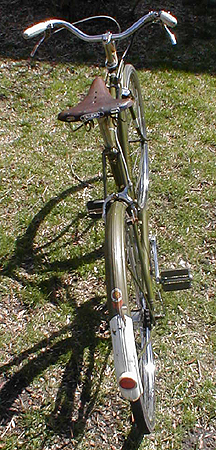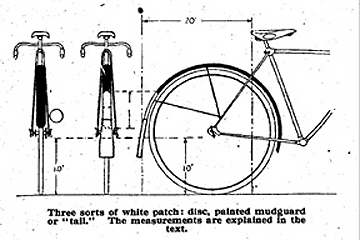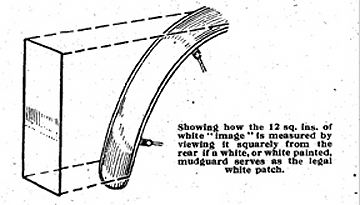





Along with a rear lamp and red reflector, British law requires a white patch at the rear of the bicycle for safety and visibility. This was a war-time regulation that came to an end on May 2, 1945. However, the Road Transport Lighting (Cycles) Act in 1945 reinstated the white patch and reflector requirement during peace-time. This information, the figures and the following excerpt came from the "Cycling Manual" 20th Edition, 1946.
"This white patch must be of such a size that its 'image' when viewed squarely from its rear is equal to 12 sq. ins. A white mudguard will meet the case, its width and vertical height being greater than the required 12 sq. ins. The white patch must be so placed on the cycle than 6 sq. ins. or more are on the right of the centre line of the cycle. In determining the centre line of a bicycle any sidecar must be left out of account. There are other stipulations about the placing of the white patch. It must be high enough from the ground so that at least 6 sq. ins. are more than 10 ins. above ground level. Also, it must be fixed no more forward on a bicycle than 20 ins. from the rearmost part of the machine. In the case of a tricycle no part of the machine must project more than 30 ins. rearwards of the white patch position.
"The colour 'white' does not include polished aluminum, chromium, or nickel plating. The white patch must be clean and unobscured."
|
Return home |